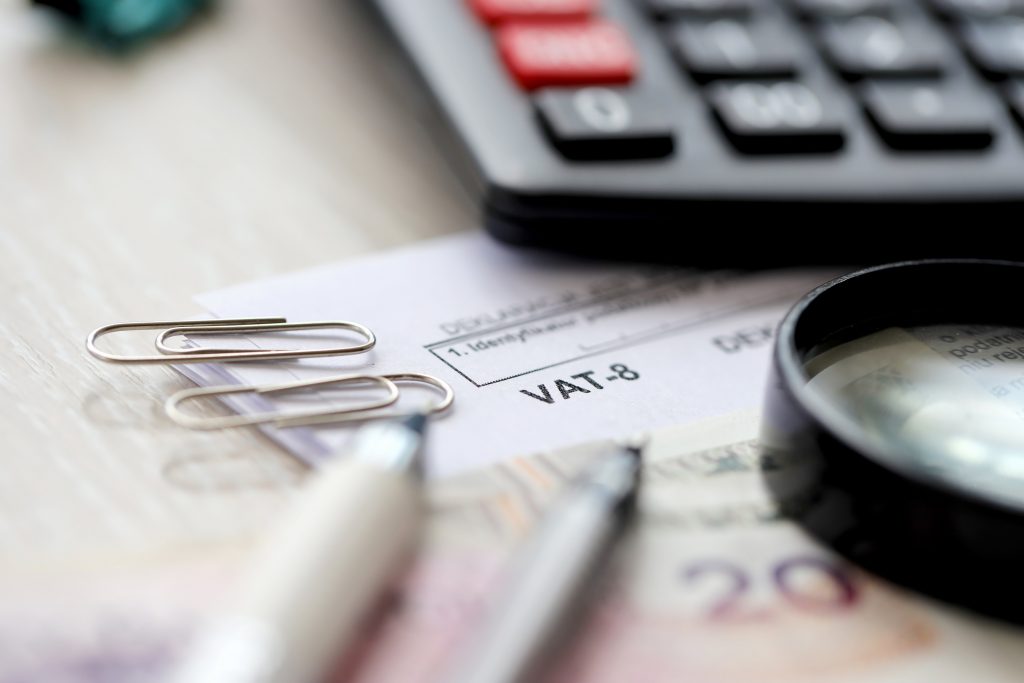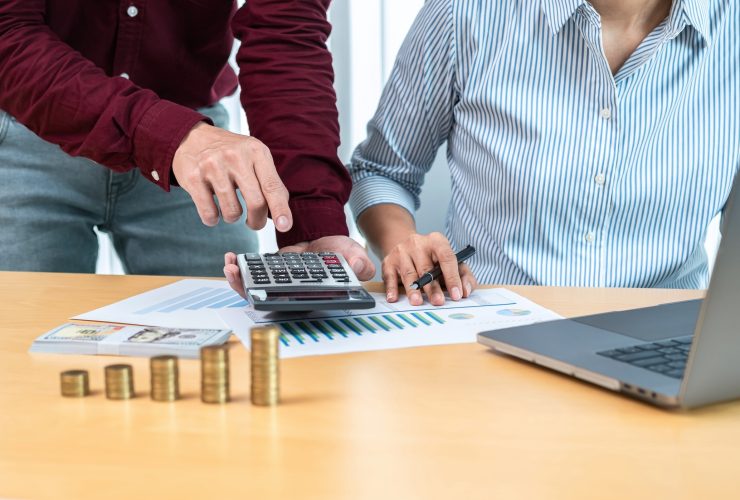What is VAT?
Value-Added Tax (VAT), also sometimes referred to as Goods and Services Tax (GST), is a type of consumption tax assessed on the value added to products and services at each point in the supply chain.
From the initial production stages to the point of sale, VAT is collected incrementally. Unlike sales taxes, which are typically levied as a single charge to the final consumer, VAT is a multi-stage tax. While over 160 countries around the world utilize VAT systems, the United States currently does not have a federal VAT.
In a Nutshell
- VAT (Value-Added Tax) is a consumption tax applied to most goods and services at each stage of their production and distribution.
- It’s a major source of revenue for many governments worldwide, but the United States doesn’t have a federal VAT.
- VAT rates vary between countries, and there are often exemptions or reduced rates for essential items.
- Businesses act as VAT collectors, charging customers and remitting the difference between collected VAT and VAT paid on inputs to the government.
- VAT aims to tax the final consumer, with rules in place for imports and exports to ensure fair taxation within international trade.
How Does VAT Work?

VAT is designed to tax the “value added” at each stage of a product’s production or a service’s distribution. Here’s a simplified example of how VAT might work:
- Manufacturer: A manufacturer produces a widget for $10 and sells it to a wholesaler for $15. If the VAT rate is 10%, the manufacturer charges the wholesaler $1.50 in VAT (10% of $15).
- Wholesaler: The wholesaler adds value by repackaging and distributing the widget, selling it to a retailer for $20. The wholesaler charges the retailer $2 in VAT (10% of $20). However, the wholesaler can deduct the $1.50 VAT it paid to the manufacturer, remitting only $0.50 to the government.
- Retailer: The retailer sells the widget to the final consumer for $30. The retailer collects $3 in VAT (10% of $30). The retailer deducts the $2 VAT paid to the wholesaler and pays $1 to the government.
Key Point: In the end, the consumer bears the full cost of the VAT, but it is collected in smaller amounts throughout the supply chain. Businesses act as tax collectors, with the ability to deduct the VAT paid on their inputs (purchases) from the VAT collected on their outputs (sales).
VAT Terminology: Key Terms Explained
| Term | Brief Definition | Example |
|---|---|---|
| Input VAT | VAT paid by a business on its purchases of goods and services. | A bakery purchases flour and pays $2 in VAT to the supplier. |
| Output VAT | VAT charged by a business on its sales of goods and services. | The bakery sells a cake for $20 and charges $4 in VAT. |
| VAT Return | A report filed with tax authorities, detailing collected VAT, input VAT, and the net amount owed or refundable. | The bakery files a VAT return reporting $4 output VAT and $2 input VAT, owing $2 to the government. |
| Zero-rated | Goods/services with a 0% VAT rate. Businesses can reclaim input VAT. | A bookstore sells exported books (zero-rated) and can reclaim VAT paid on printing costs. |
| Exempt | Goods/services completely excluded from VAT. | Basic groceries, healthcare services, or financial services might be exempt. |
Why is VAT Used?
VAT has become a popular taxation method for governments around the world for several reasons:
- Revenue Generation: VAT’s broad base, applied to most goods and services, makes it a reliable and substantial source of government revenue.
- Transparency: The incremental nature of VAT, where businesses throughout the supply chain are involved in collection and remittance, can create a clearer audit trail compared to some other tax systems. This can potentially help reduce tax evasion.
- Fairness Debate: The fairness of VAT is a subject of debate. Proponents argue that because it taxes consumption, it might encourage saving and investment. However, critics note that VAT can be regressive. This means lower-income individuals, who spend a greater proportion of their income on basic necessities, may bear a disproportionate share of the tax burden.
It’s important to note that many countries try to address the potential regressivity of VAT by implementing the following:
- Varying VAT rates: Lower rates might be applied to essential goods and services.
- Exemptions: Certain categories like basic foods, healthcare, or education might be exempt from VAT entirely.
VAT Rates and Exemptions
VAT rates vary significantly from country to country. Most nations have a standard VAT rate applicable to the majority of goods and services, typically ranging between 15% and 25%. Here’s how VAT rates and exemptions often work:
- Reduced VAT Rates: Reduced rates may apply to essential items like groceries, utilities, or specific services to ease the tax burden on consumers.
- Zero-Rated Goods and Services: Even though VAT is charged at 0% for zero-rated items, businesses can reclaim input VAT, effectively making these transactions tax-neutral. Exports, medical items, and education commonly fall in this category.
- Exempt Goods and Services: Specific goods and services, such as basic food necessities, healthcare, and financial services might be fully exempt from VAT.
Examples of VAT Rates in Various Countries
| Country | Standard VAT Rate | Reduced Rates (if applicable) | Exemptions |
|---|---|---|---|
| United Kingdom | 20% | 5% (energy), 0% (some foods) | Healthcare, education, financial services |
| Germany | 19% | 7% (food, books) | Basic groceries, medical supplies, cultural events |
| Canada | 5% (GST) | Varies by province | Basic groceries, prescription drugs, childcare |
| Japan | 10% | 8% (food, public transport) | Education, financial services, residential rent |
| Australia | 10% (GST) | Fresh food, healthcare, education |
The United States: A Notable Exception
The United States is a major exception to the global trend, as it does not have a federal Value-Added Tax. Instead, the U.S. primarily relies on income taxes at the federal level and sales taxes administered by individual states and sometimes localities.
Important Note: Understanding the specific VAT regulations within your jurisdiction is crucial for businesses and individuals involved in taxable transactions.
VAT and Businesses
Businesses play a pivotal role in any VAT system. Understanding VAT obligations is essential for businesses of all sizes, as they are responsible for:
- Collecting VAT: Businesses must add VAT to the prices of goods and services they sell, collecting it on behalf of the government.
- Remitting VAT: Businesses periodically file VAT returns, reporting collected VAT, deducting VAT paid on business purchases (input tax), and remitting the net amount to the tax authorities.
- Record-keeping: Accurate records of sales, purchases, and VAT calculations are essential for proper reporting and to substantiate input tax deductions.
- Pricing Considerations: Businesses need to factor VAT into their pricing strategies to ensure both compliance and that they are not absorbing the tax cost themselves, reducing their profits.
Key Points for Businesses:
- VAT registration: In most countries, businesses exceeding a certain revenue threshold must register for VAT.
- Invoicing: VAT-registered businesses must issue proper invoices indicating the VAT amount charged.
- Impact on Cash Flow: Businesses may experience temporary cash flow effects due to the time lag between collecting VAT from customers and remitting it to the government.
VAT and International Trade
VAT systems generally follow the destination principle, which means a product or service is taxed based on where it is ultimately consumed, regardless of its production origin. Here’s how this works in practice:
- Exports: Goods and services exported from a VAT country are usually zero-rated. This means that exporters don’t charge VAT to their overseas customers, and they can reclaim any input VAT they paid during the production process. This prevents double taxation and enhances the competitiveness of a country’s exports on the global market.
- Imports: When goods are imported into a VAT country, VAT is typically levied at the standard rate based on the value of the import plus any customs duties. This ensures that imported and domestically produced goods are taxed equally.
Key Considerations:
- Supply Chain Complexity: VAT calculations for international businesses can become more complex due to varying rates and regulations across jurisdictions.
- E-commerce: The rise of e-commerce has posed new VAT challenges related to taxing cross-border digital services and ensuring compliance from online sellers operating across borders.
Important Note: Businesses involved in international trade should carefully consider VAT regulations in both the origin and destination countries to ensure proper collection, remittance, and reclaiming of input VAT.
VAT Resources for Businesses and Individuals

Navigating VAT regulations can be complex, but numerous resources are available to offer guidance and support. Here are some key places to start:
- Government Websites:
- Most countries with VAT have official tax authority websites with extensive VAT information. These offer official regulations, guidance documents, FAQs, and sometimes even online calculators.
- Example: UK Government’s VAT Resources
- Reputable Online Resources:
- Accounting and tax preparation websites often have dedicated VAT sections with explainers, articles, and tools.
- Tax Advisors and Accountants:
- For businesses with complex operations or specific VAT questions, consulting a tax advisor or accountant is recommended. They offer expert guidance tailored to your individual circumstances.
Additional Tips:
- Stay Updated: VAT rules can change, so check government websites or subscribe to newsletters from tax authorities for the latest updates.
- Network: Connect with other businesses in your industry to share experiences and knowledge about VAT compliance.




